What’s Involved in an Openreach FTTP Full-Fibre Broadband Installation? | Increase Broadband Speed

Back in December 2013, we created the guide What’s Involved in a Fibre Broadband Customer Installation, which has proved very popular over the years. This was produced when Fibre-to-the-Cabinet (FTTC) services were first introduced in our local area as part of the Connecting Cambridgeshire roll-out programme. To mark the availability of full-fibre Fibre-to-the-Premises (FTTP) in our local area, here is a similar guide for FTTP. FTTP is without question the best technology to deliver broadband since it offers the best speeds and reliability and lowest latency of all available technologies. As shown, installation is usually relatively quick and straightforward.
Before FTTP can be installed to your premises, it has to be made available in your local area with a Connectorised Block Terminal (CBT) available nearby
With FTTP, broadband is carried all the way between your premises and your telephone exchange by fibre-optic cable. These fibre-optic cables can be installed underground in ducts or overhead using telegraph poles. In general, fibre-optic cables will be installed along the same route used by existing telephone cables. So, if your current telephone service is supplied using underground cables, a fibre-optic cable will be installed between a nearby underground chamber and your premises. If your current telephone service is supplied using overhead cables fed from a telegraph pole, a new fibre-optic cable will be installed between the telegraph pole and your premises alongside the existing telephone cable.
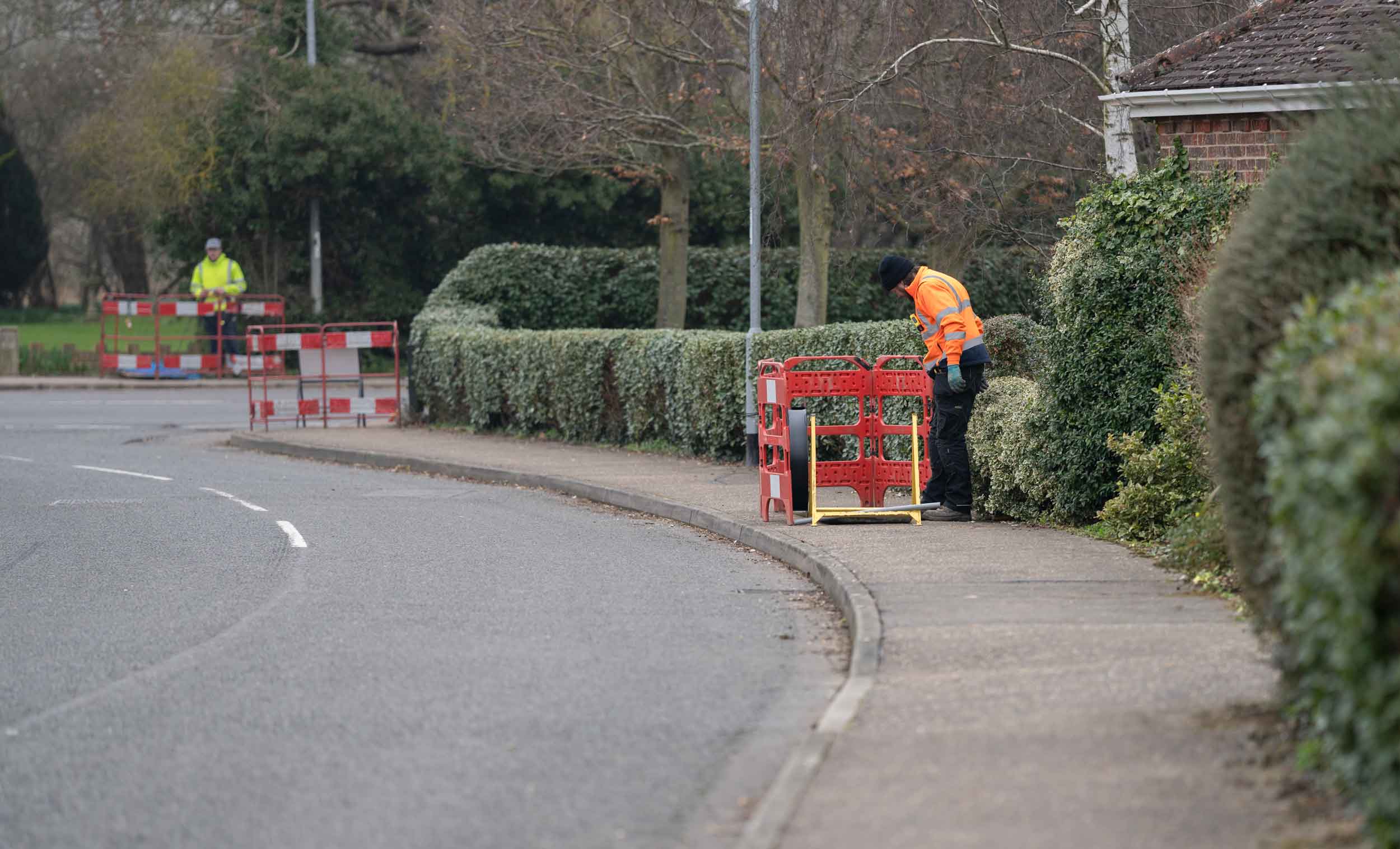
Before an FTTP installation can take place to your premises, there must be a nearby fibre connection point – known as a Connectorised Block Terminal (CBT). The CBT is connected back to the exchange via fibre-optic cable and has to be installed in your nearby underground chamber or attached to a telegraph pole. The photos below show Connectorised Block Terminals in an underground chamber (left) and attached to a telegraph pole (right), all ready for FTTP services to be provisioned.
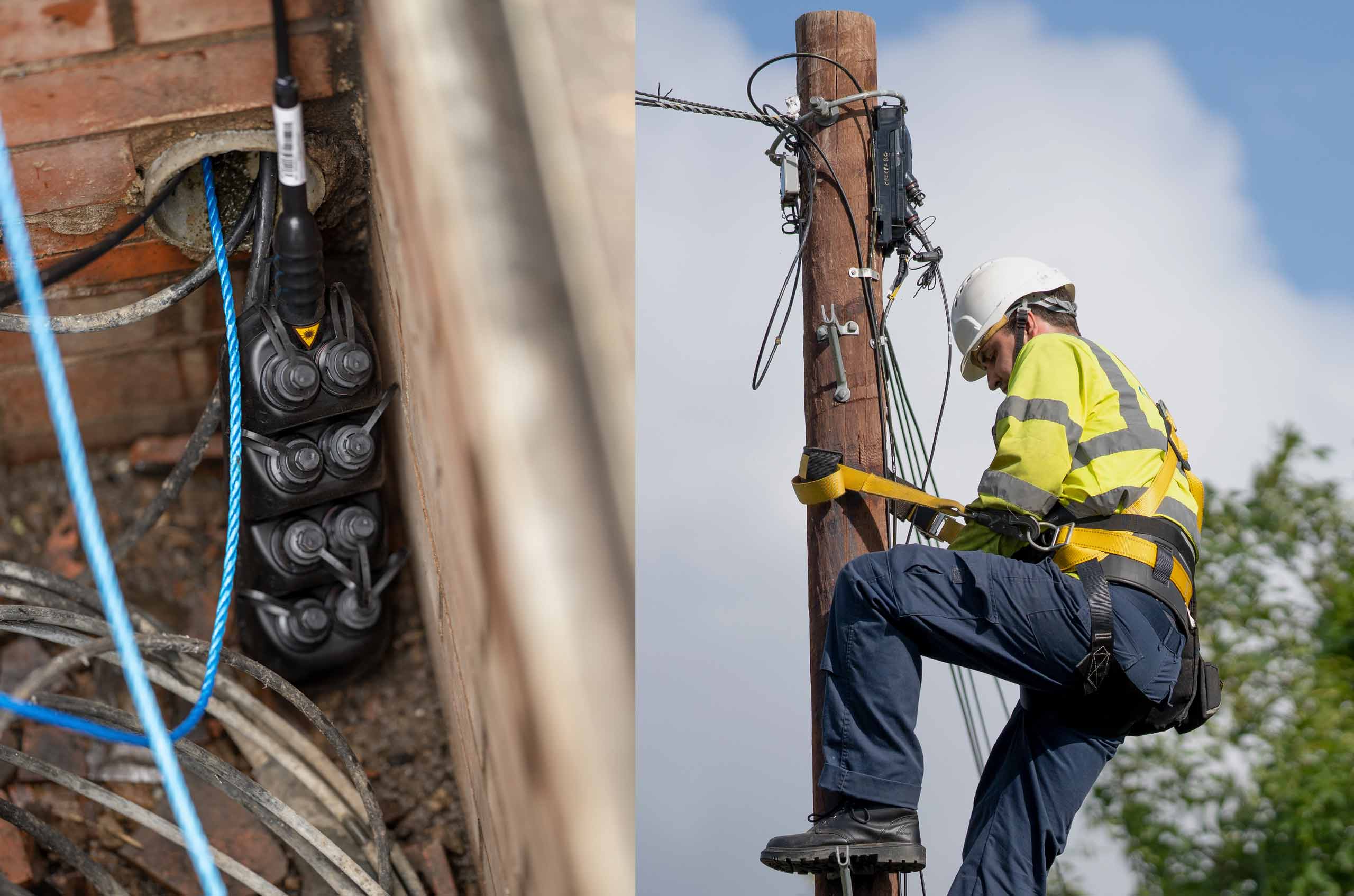
The installation of this infrastructure and the installation of fibre-optic cables all the way back to the exchange can take a considerable amount of time, and be slowed down by the need to close roads or clear blockages. Furthermore, Openreach can take the opportunity to replace or relocate ageing telegraph poles (as shown in the photo below).

There are two sites where you check on the status of Openreach FTTP services in your area:
- the Openreach Availability Checker
- the BT Wholesale Broadband Availability Checker.
You can enter your postcode (and address) on the Openreach checker here:
Openreach Availability Checker
If FTTP is already available, you’ll get the message that Ultrafast Full Fibre is available (as in the screenshot below), and you will be able to order an FTTP service from several different providers (including BT, TalkTalk, Sky and EE). Openreach will also alert you if FTTP is coming soon.
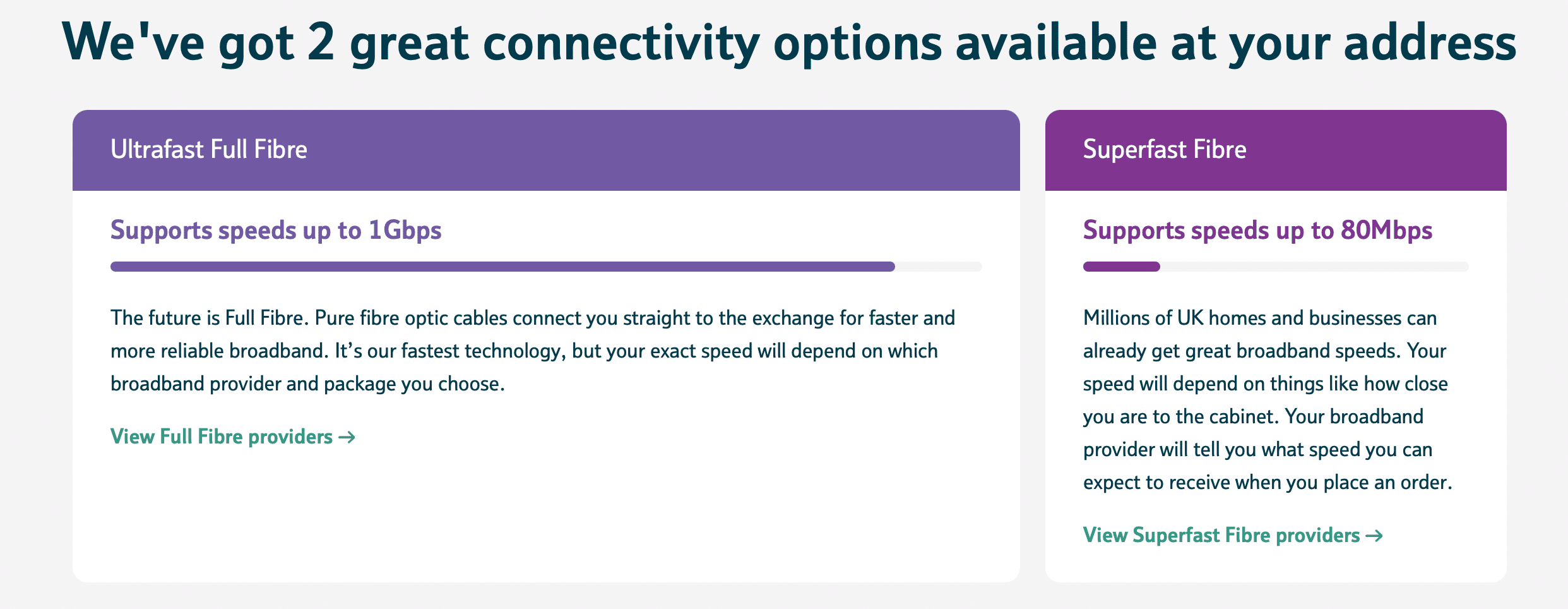
You can also enter your postcode (and address) on the BT Wholesale Broadband Availability Checker here:
BT Wholesale Broadband Availability Checker
The screenshot below shows the information you may get (click to zoom in). Under ‘Featured Products’, it shows that ‘WBC FTTP’ is available with ‘Downstream Line Rate Up to 1000 Mbps’ available. In the notes at the bottom of the page, it states “FTTP is available and a new ONT may be ordered”.
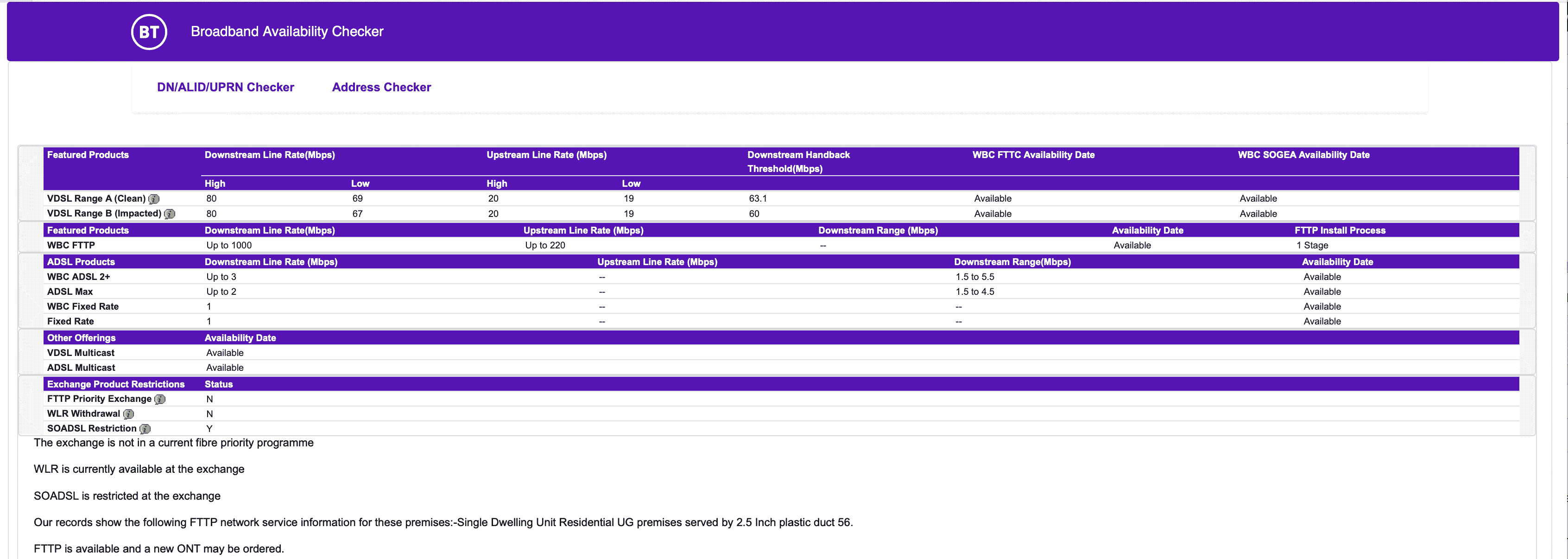
There are two main elements in an FTTP installation
Once that a Connectorised Block Terminal (CBT) has been installed locally and has gone live, FTTP can be ordered from a range of broadband providers. As part of the ordering process, an installation date (or dates) will be set, depending on the complexity of the installation process. Typically, the gap between ordering and installation is between 9 and 18 working days. In our own case, the service was ordered on 6th August 2021. An appointment date for FTTP installation of 25th August 2021 was given, which was the 13th working day following the order date.
There are two main elements to an FTTP installation:
- feeding a fibre cable from the nearby Connectorised Block Terminal (CBT) to a new Customer Service Point (CSP) box on the outside of the property (which does not involve the entry of an engineer to the property)
- installation of an FTTP modem – known as the Optical Network Termination (ONT) – inside the property, which is then attached to the router/hub (usually provided by the broadband provider).
Typically, installation (of both elements) takes about two hours.
A fibre cable is fed from the nearby Connectorised Block Terminal to the outside of the premises, either from a nearby telegraph pole or underground chamber. This follows the path of the existing (copper) telephone cable. The photograph below shows the new fibre cable after being fed through the existing underground duct. A new box is installed on the outside of the property, called the Customer Service Point (CSP), where the (copper) telephone cable and new fibre cable are fed into.
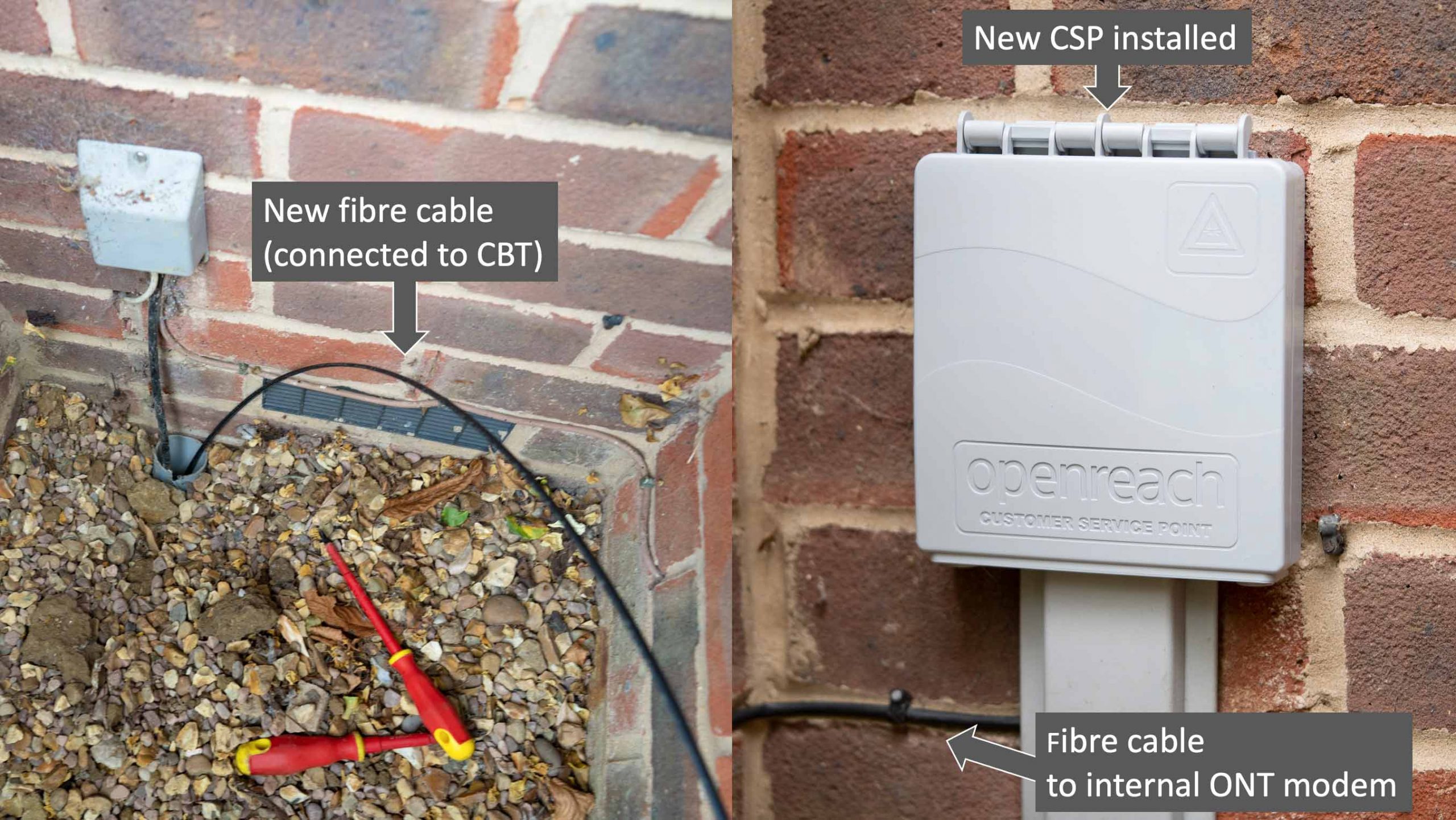
The second part of the process involves the internal installation of a small FTTP modem – called the Optical Network Termination (ONT) – located close to the router, which is shown in the photo below. The model installed was a 1-port model without any battery backup, so we connected its power supply to our APC Back-UPS battery backup, which also powers our router, to maintain broadband connectivity in a power cut.

In our case, a hole was drilled to the outside of the property with a fibre cable fed from the ONT modem to the Customer Service Point outside. There’s usually flexibility on where the ONT modem is installed, so you do not have to locate it next to your existing telephone point. In our case, our high-power router – the Ubiquiti UDM Pro – is relatively noisy as it contains a spinning hard drive to store security CCTV footage and has been placed in a large, soundproofed cupboard. Our ONT modem was installed in the same cupboard, next to the router.
Outside, the Openreach engineer joins (“splices”) the internal optical cable (going from the Openreach ONT modem to the Customer Service Point box) to the optical cable coming from the the CBT. An Ethernet cable (connected to the ‘PORT’ terminal on the ONT modem) is used to connect a hub or router.
When everything is working fine, the Openreach ONT modem will display three green lights (as shown in the photograph above). A solid green light for ‘POWER’ indicates that the modem is powered and is operational. A solid green light for ‘PON’ (which stands for Passive Optical Network), with the Loss Of Service (‘LOS’) light not illuminated, indicates that the system is working properly. The fibre optic link to the BT exchange is working and recognises the Openreach fibre modem. A green light for ‘PORT’ indicates that the modem has successfully detected the hub/router.
The focus on the Openreach engineer will be the quality of the optical connection, and light levels will be measured to ensure that your connection will be reliable.
First impressions of FTTP are extremely positive
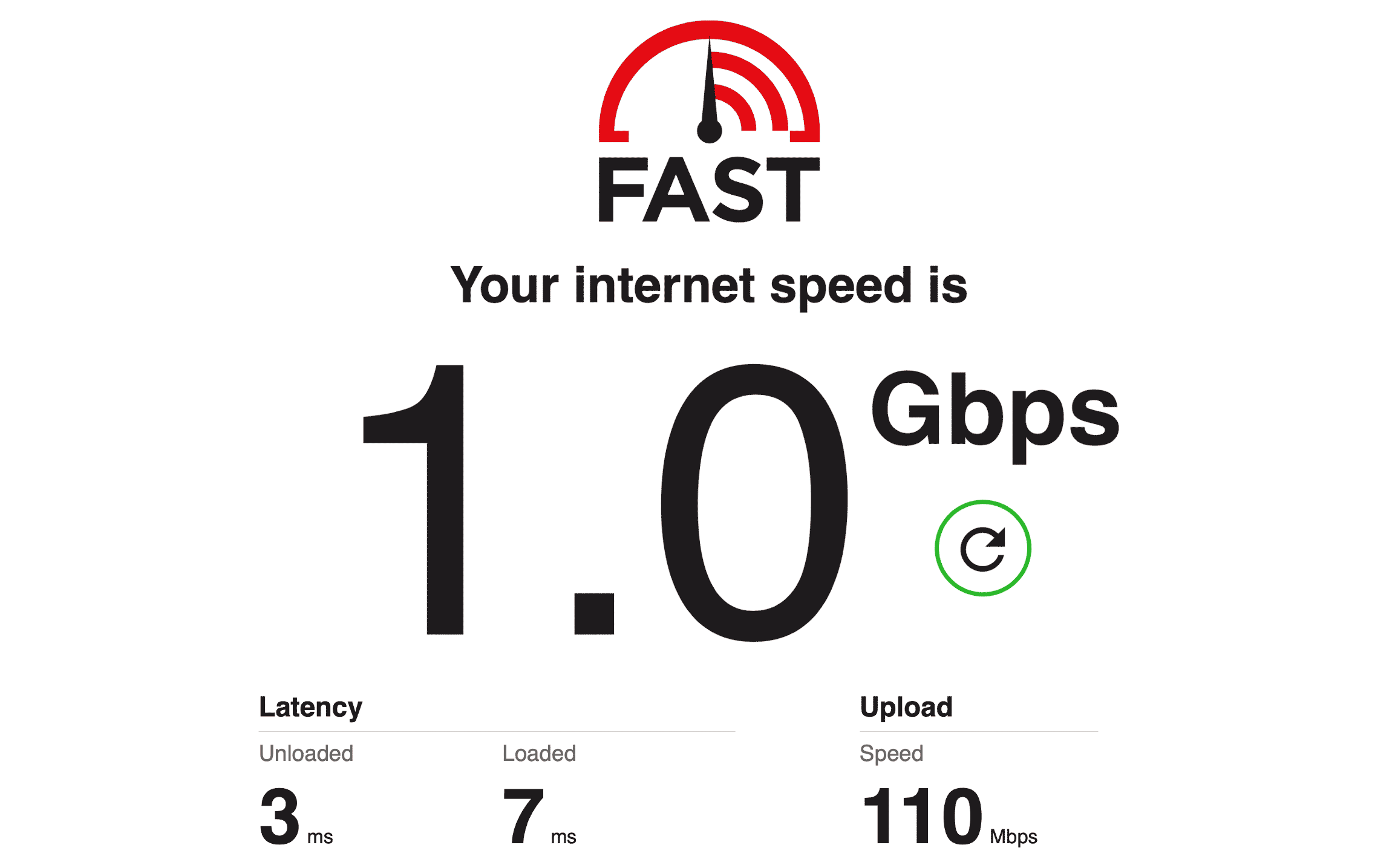
With everything working, we can confirm FTTP performance is excellent. In our case, being located close to the nearby green fibre street cabinet, we had an excellent Fibre-to-the-Cabinet (FTTC) service, with a downstream connection speed of 80 Mbps (and measured throughput of about 74 Mbps). Our measured downlink throughput with FTTP is over 12 times greater than with FTTC, with uplink throughput over six times greater than FTTC. Latency is also noticeably improved, with pings to popular sites (e.g. www.google.co.uk and www.bbc.co.uk) of about 5ms, which is about 3 to 4ms lower than with FTTC.
Other pages you may be interested in:
Increase Broadband Speed Guide | Blog















![Toni Kroos là ai? [ sự thật về tiểu sử đầy đủ Toni Kroos ]](https://evbn.org/wp-content/uploads/New-Project-6635-1671934592.jpg)


